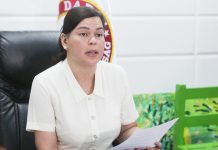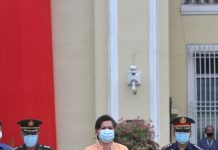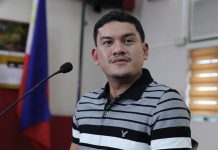After 60 years, the Mindanao map will be updated by 2012 through the project “Topographic Mapping for Peace and Development in Mindanao” which will be implemented by the Japan International Cooperation Agency, National Mapping and Resource Information Authority (NAMRIA) and Mindanao Development Authority (MinDA).
Apart from the latest which was created in 1952, this new map will be digitally produced and with geographic information system, providing more information about Mindanao than in the Google Earth—a virtual globe accessible via internet. This was according to Under Secretary Jesus Dureza of the MinDA during the soft launching of this project at the Marco Polo Davao last July 27.
“This one will be really complete in the sense na kung gamitin mo yung Google Earth ngayon, di mo alam anong pangalan ng lugar (if you use the Google Earth now, you will not know the name of the area). Whereas, this map that will come out will be zeroing in areas with specific names and specific information,” he said.
“A lot of things had changed already, so with this new recent map that will be digitally produced, you can already look at every corner of Mindanao and identify these areas. So this will be good for strategic consideration, like you want to plan out development of an area,” he said.
This digital topographic map will be used not only by the government. “This can be used by investors if they want to look at the map, especially with identifications of specific areas,” Dureza said.
“Investors will make full use of it. They can look at the topography of a mountain on real time, of course, with the most recent imaging that will be done,” he added.
Further, this two-year project is worth one billion yen or PhP500 million from the government of Japan. Masafumi Nagaishi, JICA senior representative, said the details are not yet decided. He said they are still deciding which assistance they can do in this project such as in the form of equipment or instrument.
Under Secretary Peter N. Tiangco, Ph.D., NAMRIA, said the counterpart of the Philippine government in this project is only manpower for some activities; the funding is 100% by the JICA. Funding was the prime consideration why it took 60 years before the Mindanao topographic map will be revised.
“Funding ang unang unang problema (Funding is the utmost problem of the government). But now we’re so unfortunate that disasters had to happen before they realized the importance of the outputs that we are producing. With our outputs, maiiwasan mo yung mamatayan, …maaksidente, …masasalanta, say ng baha, ng earthquake (we can avoid deaths, accidents, victims, say, of floods, earthquakes),” Tiangco said.
With climate changes and disasters which triggered the pursuance of this project, he added that this is anchored on the peace and development efforts in Mindanao. Acknowledging the statement of the JICA representative, he said there is a big chance of peace if there is development. “Nag uugat naman ang gulo kadalasan sa kahirapan ng buhay. Hindi naman baril ang solusyon dyan eh (Disorder is usually rooted in poverty. Guns are not the solution to this),” he said.
With the last detail of the names of the barangays and areas that were not part of the map before, Dureza said, this project is very important in terms of peace and development. “Part of the use of the map that would be done is also to address risk and disaster prone preparations and assessments because you will see, with the recent imaging, the areas that we have to be wary of,” he said.
Topographic mapping, Tiangco said, can only be produced with stereoscopic imaging. The image of an area will be taken in two different angles, and using certain software, its height and contours will be shown. Overlaying the recent images with the 60-year old map, contours will be updated.
But, there is still a need for ground validation. He said satellite images may not be in the right alignment so it needs to undergo georectification. It is the process where one will go to the area and get its global positioning system or GPS reading. This will be inputted on the image in the computer to ensure its correct direction.
With this, Tiangco said that cooperation with community members is important. But, when asked about areas with armed conflict, he said there is a new technology to minimize the conduct of ground validation.
Meanwhile, he said, in the analysis stage, geographic information system will be used. This is the overlaying of information using the topographic map. This technology may be utilized for political analyses in a particular voting population given the demographic information, he added.
“Everybody can access the map,” Tiangco said. The NAMRIA, local government units, academe, research institutions and other partners of the government will be given complimentary copies of the digital map, but, he said, it will be available for the rest at cost.
“We’re trying to make it free sa lahat (to all), pero dapat nating isipin na may ginastos dito ang gobyerno. Sana maibalik ang cost (but we should also think that the government has some expenses that hopefully will be repaid),” he said.
General maps can already be accessed over the internet, but the data which will be provided in the new topographic map will still be available later. Meanwhile, he said that he dreams that the topographic maps of Luzon and Visayas, which were last updated in 1976, will be revised after this two-year project. But then again, it depends on the availability of funds.






